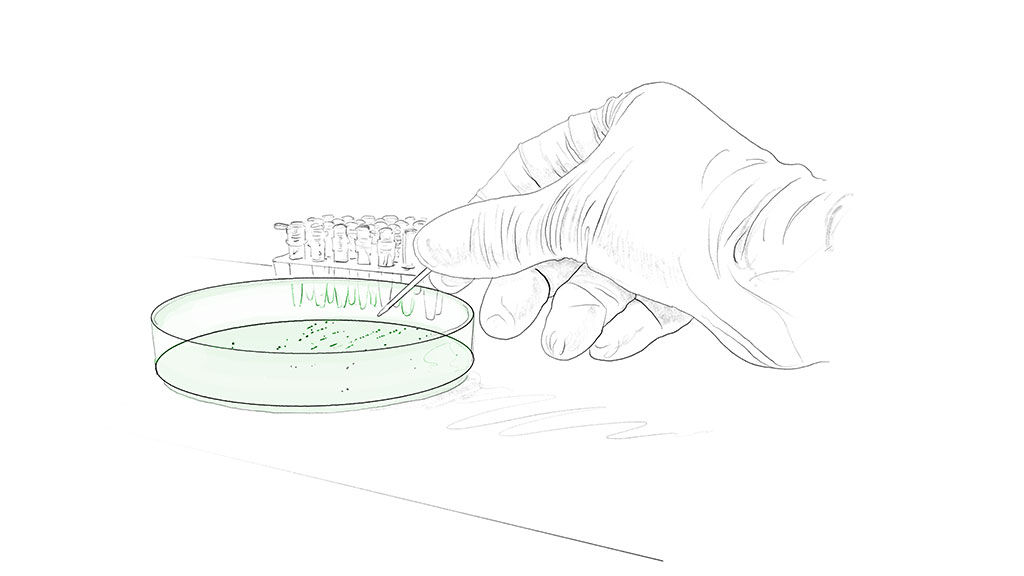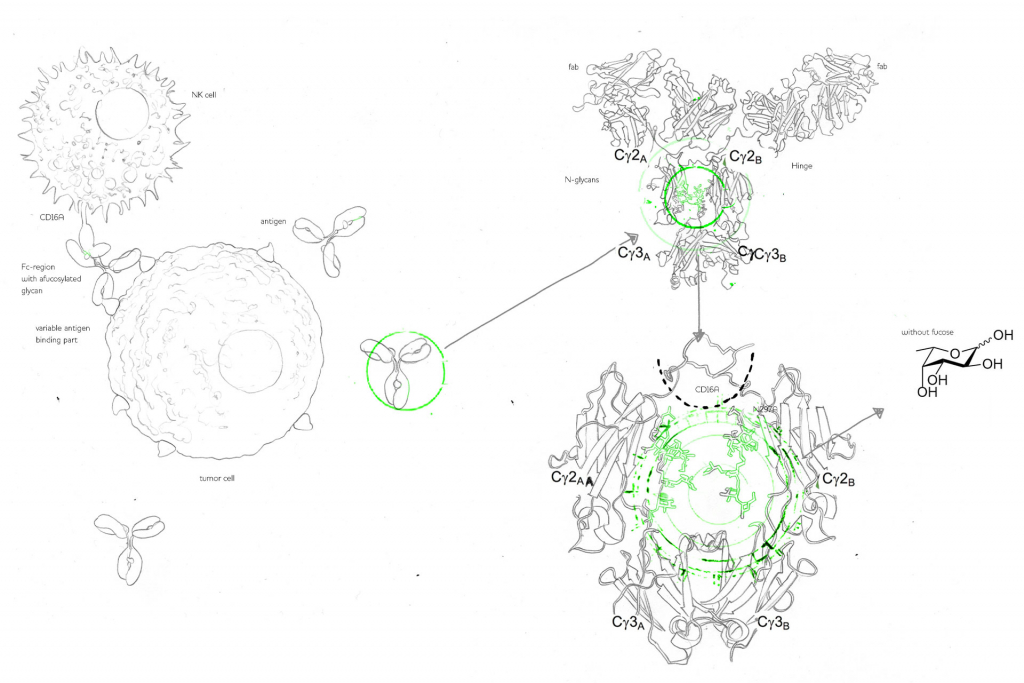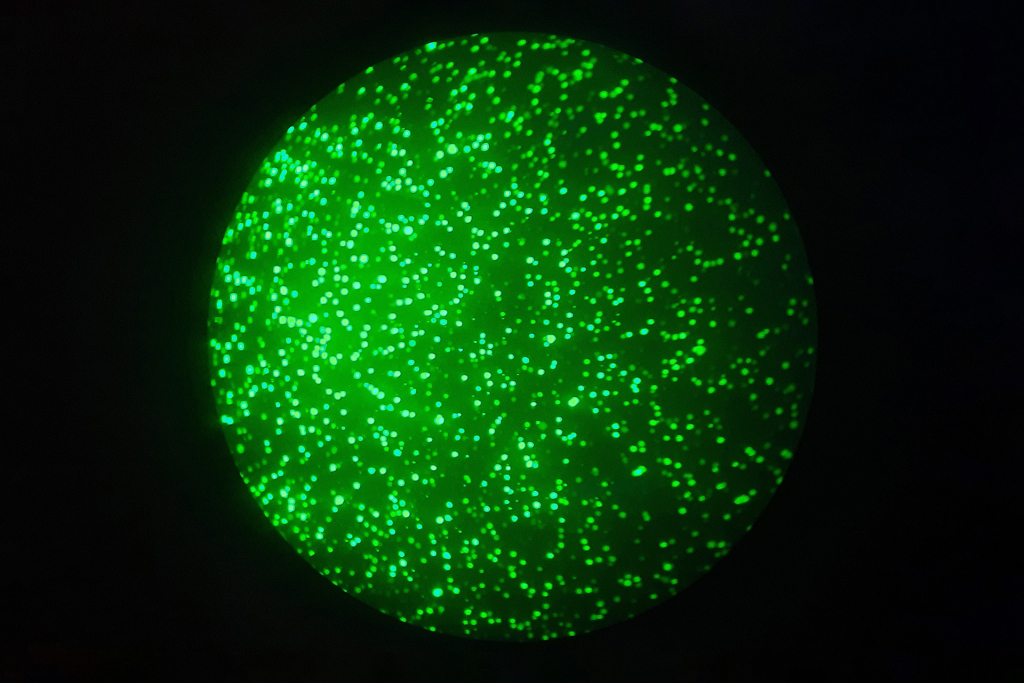Mammalian cell culture is the process of growing cells obtained from mammals in vitro, that is in flasks or bioreactors. It is the technique of growing cells outside their original tissue. Instead, a growth medium is used to replicate the natural environment and support the cell growth process.
Mammalian cells are eukaryotic cells. In this article, you will get an overview of mammalian cell types and how they are categorized.
With this out of the way, we will give you more details what mammalian cell culture is and what it is used for in industry and basic research in cell biology. Finally, we show you how recombinant antibodies are produced in mammalian cell culture.

In general, mammalian cells are eukaryotic cells. That means that each cell itself is much more complex than a bacterial cell. Moreover, since mammals consist of billions of individual cells in many organs and tissues, there is a lot of specialization among mammalian cells.
Subscribe to our Newsletter
Get all the latest updates, and learn about our advancements in antibody production.
Subscribe now
According to their specialization, mammalian cells are categorized into cell types, depending on their localization in the body, their morphology, and their function.
Histology (the science of microscopic anatomy) lists more than 200 distinct types of human cells alone. Histologic cell types are classified how they originated during early embryonic development:
Cells could also be categorized depending on their main physiological function:

Mammalian cell culture is the technique of growing animal cells outside of their original tissue but in a growth medium instead.
Cells are typically grown in a cell culture vessel such as a shake flask placed in an incubator that provides a controlled environment for optimal growth. To maintain cell integrity, the medium contains nutrients, a carbon source such as glucose, vitamins, amino acids, salts, oxygen and CO2, and growth factors. Some media contain fetal bovine serum (fbs), but this comes with the downside of limited reproducibility and potential contaminations.
Mammalian cell culture is applied in various fields of life sciences, for instance:
Read more about the application of cell culture.
A mammalian cell line is a population of mammalian cells that can be grown due to their ongoing cell division. Generally, a normal cell has a limited lifespan and does not divide indefinitely. To generate a cell line, cells must undergo immortalization.
Oftentimes, immortalization processes involve mutations of genes that deregulate the cell cycle or enhance proliferation processes. Natural sources of immortal cell lines are cancerous tissues, from which the first immortal cells originated.
A more specialized approach is the fusion of B cells with myeloma cells to generate immortalized antibody producing hybridoma cells.
In contrast, stem cells have the natural ability to divide indefinitely, e. g. embryonic stem cells from blastocysts.
A differentiation must be made with the culture of primary cells, where normal, mortal cells are removed from a tissue (e. g. via biopsy) and then grown in culture media.
These cells undergo a few cell divisions and then begin to die. This limits their applications but they are more representative of live tissue compared to immortalized cells. Read more on “How recombinant antibodies are made“.
Adherent cells, which require a surface for attachment, are commonly used in mammalian cell culture. The process begins with seeding cells onto culture flasks or dishes containing a suitable growth medium. The medium provides essential supplements like vitamins, amino acids, salts, and growth factors necessary for cell growth and proliferation.
To ensure successful cell passage or cloning, the cells need to reach an optimal density. When cells reach confluence, they form a monolayer, indicating that the culture vessel is densely populated with cells. At this stage, trypsin is commonly used to detach the cells from the substrate for subculturing or transfer to a new culture vessel.
Maintaining appropriate cell density is crucial for optimal growth and function. Overcrowding can lead to nutrient depletion and compromised cell health, while low cell density may result in decreased viability and impaired cellular activity. Regular monitoring and subculturing are necessary to maintain the desired cell density.
Throughout the culture process, maintaining aseptic conditions is essential to prevent contamination. This includes working in a sterile laminar flow hood, using sterile techniques, and employing antibiotics or antifungal agents when necessary.
Recombinant antibody expression with mammalian cell culture is a combination of recombinant molecular biology technologies with cell culture of mammalian cells.
It leverages several key advantages of both techniques to arrive at antibody products much superior to traditional technologies.
Read more: How are recombinant antibodies made?
First, a suitable gene coding for the desired antibody is designed. This abolishes the need for the immunization of animals which comes with the disadvantages of batch to batch variability and even antibodies for highly toxic substances became accessible.
Subsequently, this gene is inserted into a mammalian cell line via a vector. Usually, cell lines derived from the ovary of the Chinese hamster are used for expression due to their superior behaviour in cell culture conditions and high yields of expression. The use of microorganisms is generally ruled out for antibody production, because their expression system is not suitable.
The CHO cell culture is kept under strict control of growth conditions like nutrient, vitamin, mineral and growth factor levels. The cells divide and begin to express the antibodies that the inserted gene codes for. Aseptic techniques and sterile reagents are mandatory for controlled, sterile growth. Learn more on CHO cells antibody production.

The importance of the culture medium was highlighted by Austrian scientists in a 2015 peer reviewed publication in Applied Microbiology and Biotechnology1, in which the cell research showed that optimization can lead to seven-fold increases in antibody titers.
Finally, the secreted antibodies are harvested from the cell culture medium and subjected to downstream processes like purification steps to yield the final product.
Mammalian cell culture is the process of growing and maintaining cells derived from mammals in a laboratory setting for research, biotechnology, and drug development purposes.
Mammalian cell culture requires a suitable growth medium, proper temperature, humidity, and CO2 levels, aseptic conditions, and adherence substrates for cell attachment.
Yes, mammalian cell culture is commonly used for gene expression studies. It allows researchers to introduce and express specific genes of interest in mammalian cells to study their function, regulation, and potential therapeutic applications.
The main difference between mammalian cell culture and bacterial cell culture lies in the type of cells being cultured. Mammalian cell culture involves cells derived from mammals, while bacterial cell culture involves the growth of bacterial cells.
A monolayer cell culture refers to a single layer of cells that are grown and attached to a substrate, such as a cell culture dish or flask. The cells are typically spread out and form a uniform, continuous layer, allowing for easier observation and manipulation in the laboratory.
Cell attachment substrates are surfaces or materials that facilitate the adhesion of cells in cell culture. These substrates can include various materials such as tissue culture-treated plastic, glass, or specialized coatings like collagen, fibronectin, or poly-L-lysine. They provide a suitable environment for cells to attach and grow in vitro.
Mammalian cell culture offers advantages such as the ability to study complex cellular functions, mimic human physiological conditions, produce biologics, conduct disease assays, and evaluate drug efficacy and toxicity more accurately compared to bacterial cell culture.